Terraced house extension plans
15 Stunning Small terraced house extension ideas
/ Isobel SmithSmall terraced house extension ideas - image: @pyramidarchitectural
When it comes to house extensions, small terraces seem to be the most popular and benefit the most. When you think about it, you’re usually fairly limited in terms of making any great structural changes with a simple two-up two-down and they can be pretty cosy inside. So, an extension can make the world of difference in terms of extra space and in adding something stunning design-wise too.
In this post, we celebrate the humble small terrace and show you 15 stellar examples of just what you could do with yours to inspire a house extension on your own property. Plus, remember to read up on the steps to renovate a house before you start a job like this.
Small terrace side extension idea - image: @pikeandparters
1. Simple side return with flat roof on a classic extended terrace
The classic small terrace layout tends to be L-shaped with an old extension already stretching into the garden.
In this kind of situation, a side return can fill in that usually-unused section of space between the existing extension and the boundary but also provide a hefty amount of floor square feet and really open up the ground floor.
Side and rear small terraced extension idea - image: @nuprojects.co
2. Wrapped L-shape side and rear extension matched with the house
With the classic L-shape just mentioned, you might be able to extend a little to the rear as well.
This entirely relies on the limits of your planning permission depending on how far the rear wall sits from the rear boundary of the property but working with a good architect will answer your questions around this.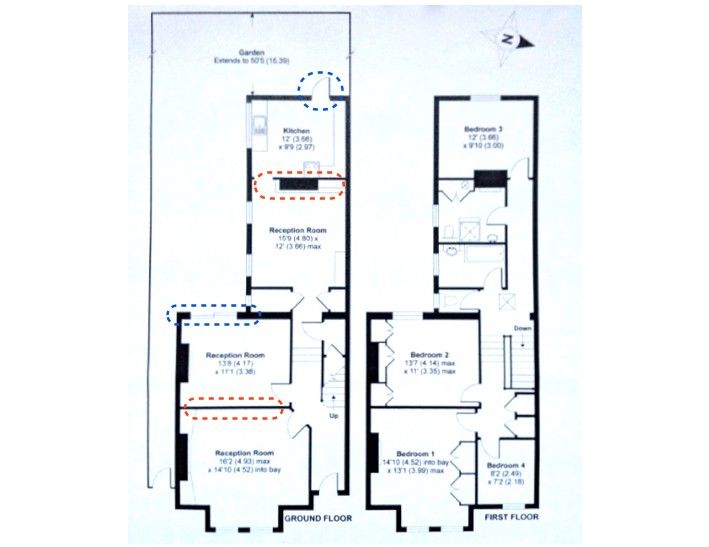
Even a few feet to the side and rear can make a massive impact.
Double story small terrace extension idea - @victorianterrace120
3. Simple double-storey extension with coordinated paintwork
Although this small terrace extension looks simple at first, it’s deceptively brilliant.
The homeowners have added a two-storey extension onto the rear which totally blends in with the rest of the property and tied in the exterior decor with coordinating window and door frame colours.
We love how they’ve used decking to visually extend the property, too and those external bifold doors really open things up.
Rear extension idea for a small terrace - image: @pyramidarchitectural
4. Angled garden extension filled with light
A rear extension can make a huge impact on really small, compact terraces and this one is seriously impressive.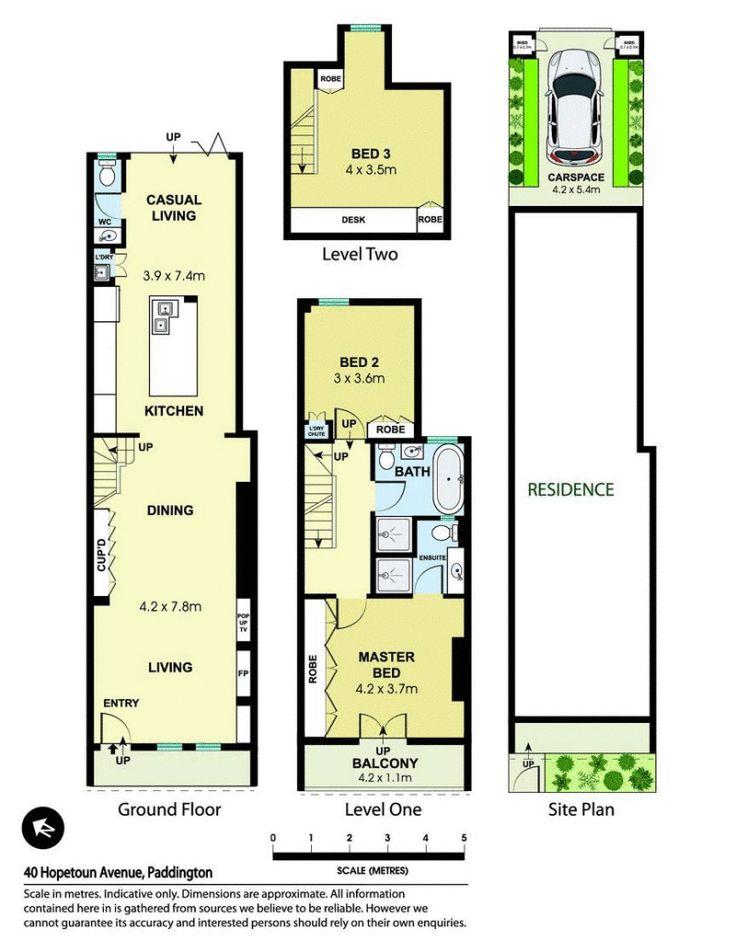
At first glance, it doesn’t look imposing at all with a light, airy frame and colour that coordinate with the existing house.
Huge skylights bridge the gap between house and garden perfectly and the size of the extension provides a tonne of extra space.
Idea for a side return on a small terrace - image: archinect
5. Contrasting timber side return extension
A new take on the classic side return.
This small terraced property looks super simple but they’ve worked wonders with a timber-clad side return which isn’t totally knocked through so it keeps the extension a little separated so you can dedicate a specific use to the new room.
Visually, this adds a lot to the home overall and it looks absolutely smashing in terms of design.
Glass side return idea for a small terrace - image: Warwick Glass
6.
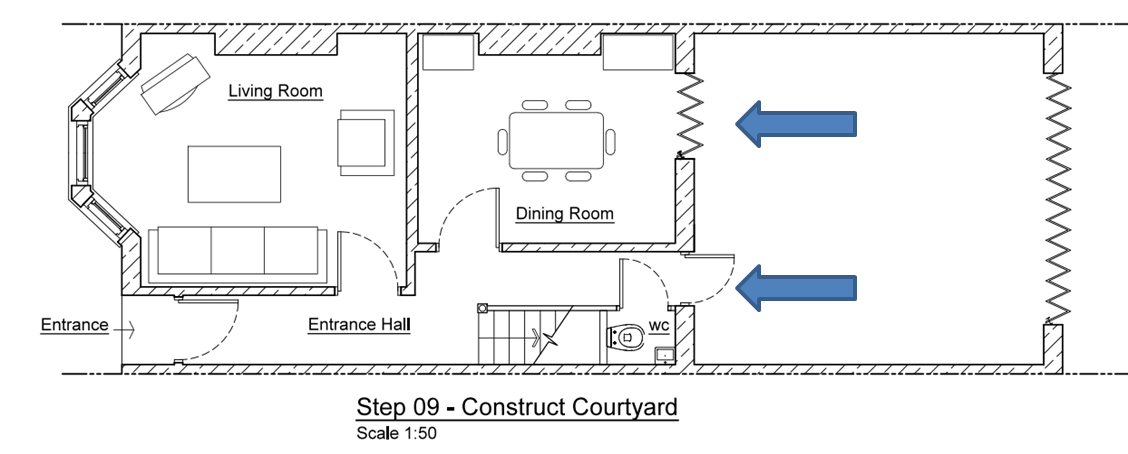 Small glass side return
Small glass side returnWe’ll let you in on a little secret… you don’t need a massive flashy extension to make a big transformation in your home.
Adding a small, glass side return onto a traditional terrace can totally level up the aesthetics as well as add some handy extra floor space, not to mention a tonne of natural light.
Plus, we all know how much the right lighting can add to a home, even when you can’t spare the space.
Contemporary small terrace extension idea - Image: Real Homes
7. Timber and angular rear extension
Whoever said you need to choose a standard flat roof when you’re adding a rear extension onto your small terraced house?
This extension is so fun and adds so much more than just another room onto the back of the property.
Throwing an angled roof and some solid timber framing into the mix turns a rather ordinary terrace on its head and it looks absolutely amazing.
Alternatively, if you already have conservatory to the rear of your terrace, you might be able to get away with just replacing the conservatory roof to make it a more permanent structure.
Idea for side and rear extension on a small terrace - imaege: French and Tye
8. Separate side and rear extensions in coordinated brickwork
We think that sometimes, simple can really tick all the boxes and more.
This home has used similar bricks to the existing house and made sure it really opens up to the rear garden with the large-scale windows, doors and full skylights.
These homeowners have also gone for a combination of both a side return and a rear extension but leave a section in front of the side return to maximise garden space.
Idea side and double storey extension idea - image: Living Etc
9. Painted side return on a double-storey extension
There’s nothing wrong with blending in.
A nice lick of exterior paint blends the extension into the old building here and it coordinates beautifully.
This kind of extension work really opens up the rear of the property on the ground floor and the pitch on the side return means the structure is less imposing at the same time as letting in a tonne of light.
Budget and plan your terrace extension with our free guide
Neil and Fi have produced a free 3 day email series to help new renovators feel clued up and confident before they begin their side extensions.
Learn:
How to cut costs and prevent your budgets spiralling
How to find trustworthy contractors who’ll deliver on time
What order to do work in (to prevent costly rework!)
Industrial side return idea for a small terrace - image: Real Homes
10.
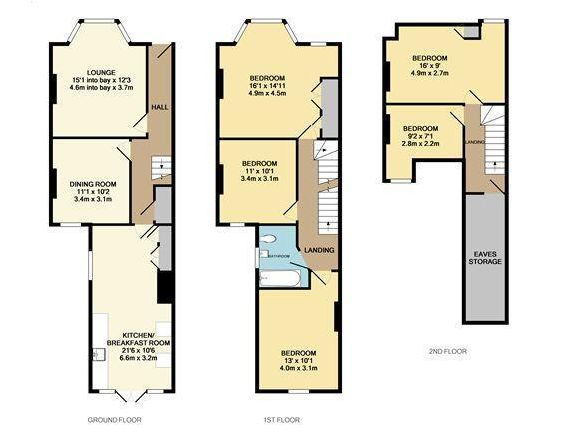 Industrial-style side return with matching brickwork
Industrial-style side return with matching brickworkEven on the standard L-shaped terrace, everyone does something different with a side return.
This home has matched the brickwork on the side wall, kept some of the original rear wall and knocked the old extension to make a beautiful open plan kitchen diner.
We’re big fans of the steel supporting beams which give a bit of a contrasting industrial look to the extension.
Small terrace rear extension idea - image: Deezen
11. Design-forward rear extension in mixed materials
What an amazing small terrace extension! We absolutely love a modern extension on an old house like this one.
They’ve brought the rear extension in line with that of their neighbours but turned the style on its head by opting for a modern, minimalist, sleek kind of structure with an extra-large rear door.
This coordinates with the roof extension/conversion to tie the whole exterior look together and it looks absolutely stunning overall.
Side and rear extension idea for a small terrace - image: @greencountydevelopments
12. Coordinated side return on an existing double-storey extension
Simple and stunning, this rear terrace extension blends in seamlessly but with a twist of contemporary styling.
The double-storey extension is combined with a single-storey side return maximises the floor feet you’re adding and looks absolutely smashing.
The ground floor opens up into a huge open-plan space and the entire home ties together with black detailing to add a dash of modern styling.
Side return extension idea for a small terrace - image: Yard Architects
13. A complementary side return
All hale the classic side extension. We’ve already explained just how practical this extension idea is when it comes to working around planning and this one does it in very simple style.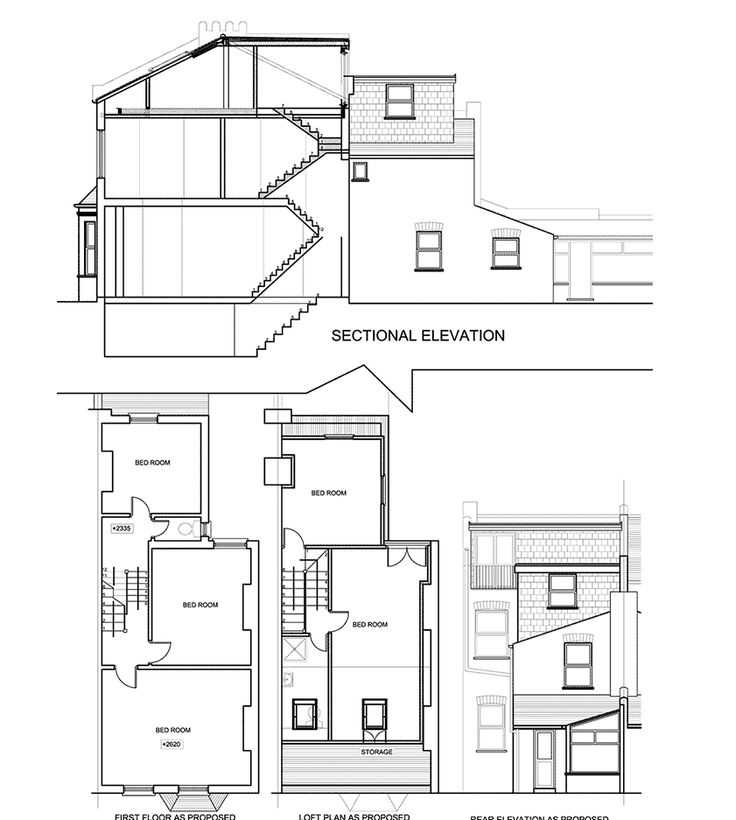
Pairing the extension shade with your window frame colour makes the whole thing look cohesive and adds at least another 50% to the overall ground floor footage.
As with other designs similar to this one, adding large skylights means transforming the interior space with the added light.
Small terrace rear extension idea - image: Eckford Chong
14. Design-forward timber rear extension
If you’re adding an extension to your small terrace then why not add bags of design cred at the same time.
This is an impressive extension if ever we’ve seen one. The timber exterior covers an unusual shape that contrasts the rest of the home but looks absolutely amazing.
The aesthetic channels a kind of greenhouse feel but with lots of natural wood and Scandinavian style. Just wow!
Double storey extension idea for a small terrace - image: Real Homes
15.
 Architectural double storey in matching brick
Architectural double storey in matching brickGo big on the extension! Scale up your plans as much as possible if you really want to maximise the space added.
Section of flat roof tends to be the most optimal choice for making sure you get the most full-height ceiling space possible and this design also cleverly works around limits on extension heights, too.
For more double-storey Victorian extension ideas, check this post out.
Which is your favourite? Have you extended your small terrace? How did you do it? Let’s chat!
Let us help your reno journey…
Planning your own small terraced house extension?
Our FREE 3 day email series covers budgeting, timelines and contractors to help you navigate your own project, small or large.
Sign up HERE!
Renovating a Terraced House: How to Extend and Update
(Image credit: Fraser Marr)Terraced homes offer a huge amount of potential, with those that have been built in the Georgian, Victorian and Edwardian eras also offering bags of character. However, small kitchens, ground floor bathrooms and a warren of separate reception rooms with little natural light don’t quite suit modern lifestyles.
However, small kitchens, ground floor bathrooms and a warren of separate reception rooms with little natural light don’t quite suit modern lifestyles.
In this inspiration guide, we explore the potential that terraced houses hold and look and some of the best remodelling and extension ideas for this style of house. Clever design tweaks can really help transform your terraced home, opening up rooms and extending the footprint to create a home that suits how we live today.
Terraced House Extension or Remodel: How to Add Value
Original features are what make terraced houses so appealing. Combining the kitchen and dining room here makes the most of the house’s features (Image credit: Mae House Design)Before beginning a terraced house extension or remodelling project, research ceiling prices on the road. This is the maximum value of any house in a certain area and you should bear in mind that, however brilliant the end result, your house will still be a terrace, surrounded by other terraces, and this will inevitably have an effect on what it will eventually be worth.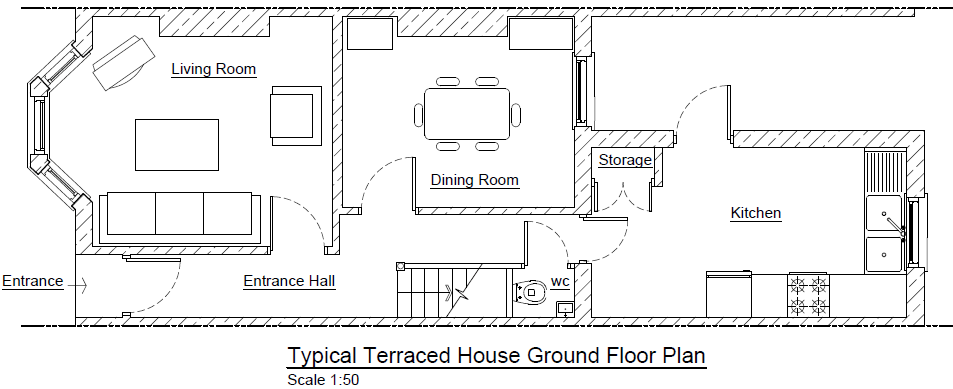
Calculate your project cost with our free extension cost calculator
Consider which projects will add the most value. Ensure your plans overcome the most negative aspects of the original house, for example a tiny kitchen or ground floor bathroom. You are almost always onto a winner by adding well-planned bedrooms and en suites.
Sometimes there is just no scope to add an extension to a terraced house – perhaps due to restrictions on your budget, a shared rear access, listed status or just a lack of space to work with — in which case a layout remodel is the way to go.
Opening up spaces to once another by removing walls that separate living rooms and dining rooms and hallways increases the sense of light and flow. (Image credit: Fraser Marr)Terraced House Extensions and the Party Wall Act
In some cases you will need to comply with the Party Wall Act. This concerns walls that you share with adjacent houses. Be aware that:
- If your extension will be up to the boundary of a neighbour’s property or on or up to a neighbour’s wall, you will need to pay attention to the Party Wall Act
- No new windows should normally be placed within 2.
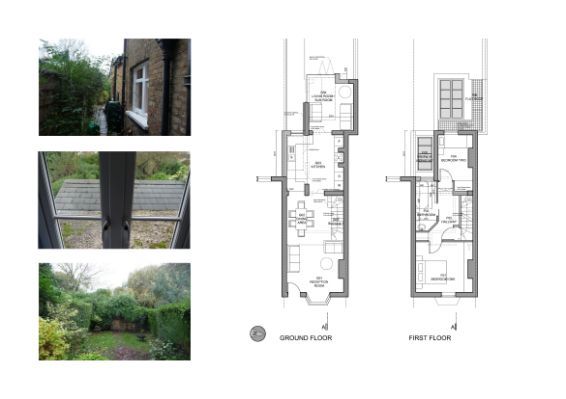 4m of the boundary that they face. For two storey extensions there should be no side windows at first floor level that can overlook neighbouring houses.
4m of the boundary that they face. For two storey extensions there should be no side windows at first floor level that can overlook neighbouring houses.
(MORE: Beginner’s Guide to Building an Extension)
Two storey extensions and large loft conversions may well require planning permission, particularly in Conservation Areas. You will also need to consult the Party Wall Act. (Image credit: Darren Chung)How to Update a Terraced House
While terraced houses vary in their layouts and the level of work they require, there tend to be certain updates that will make all the difference in terms of increasing your home's value and how you live in it.
Some of the top jobs to improve terraced houses include:
- Adding a side-return extension to create a kitchen diner
- Creating an entrance hall
- Increasing natural light
- Adding a downstairs WC
- Converting your basement
- Adding more bedrooms
- Moving a bathroom upstairs
- Converting your loft
How to Create a Kitchen Diner Extension on a Terraced House
In this terrace remodel and renovation project, many internal walls were removed to open up the entire space, flooding it with light and creating a better flow. (Image credit: Dave Burton)
(Image credit: Dave Burton)Small, narrow kitchens or single-skin brickwork add-ons are very common in Edwardian and Victorian terraces. They also often adjoin an outside WC and/or coal store.
The most cost-effective way of gaining extra kitchen space in a terraced house is to knock through into these spaces to simply incorporate them into the new kitchen, although this option does not offer much scope for changing the narrow galley-style layout.
One of the most popular ways to get a bigger kitchen in a terraced house is to create a side-return extension. Generally, this adds around 1-2m to its width.
(MORE: How to get an open-plan space right)
Within this side-return extension, a kitchen diner has been created, with living space in a new rear extension (Image credit: Design Squared)This idea also opens up the opportunity to extend out at the rear at the same time (or perhaps incorporate those outbuildings).
Adding a side-return terraced house extension is also the ideal place to use large areas of glazing to help bring natural light into the home.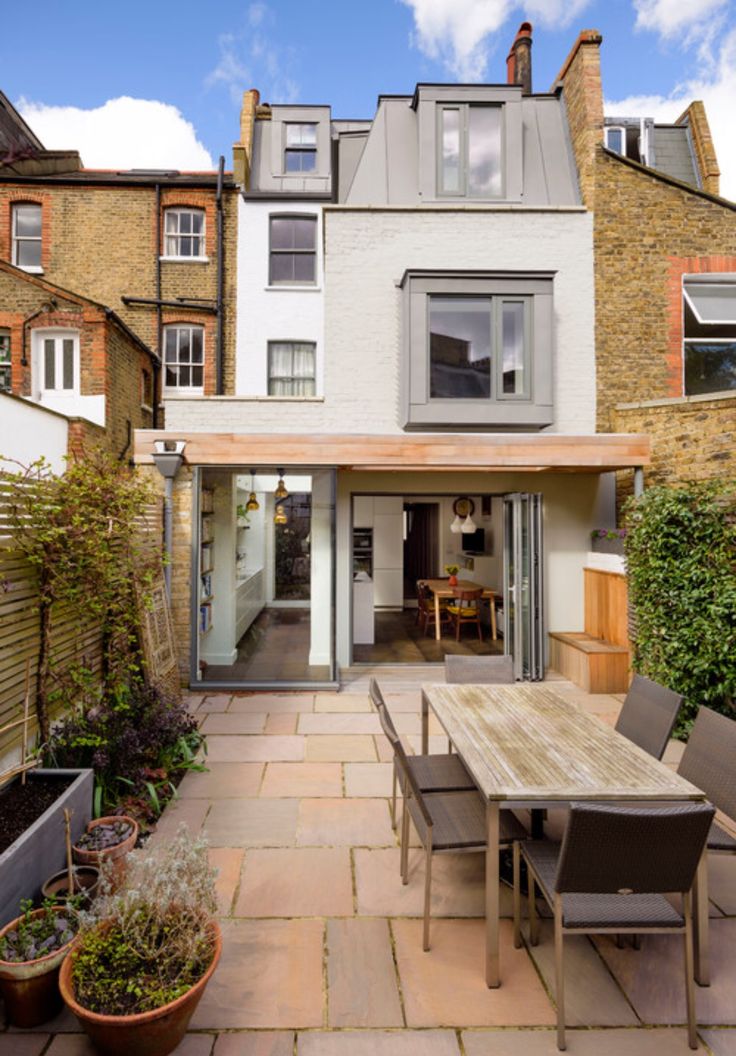 Consider a glazed roof or a bank of rooflights. A clerestory window is also sometimes incorporated into the wall overlooking the neighbours, providing light but without losing privacy. (Check out these great ideas for bringing in light from above).
Consider a glazed roof or a bank of rooflights. A clerestory window is also sometimes incorporated into the wall overlooking the neighbours, providing light but without losing privacy. (Check out these great ideas for bringing in light from above).
A swathe of bi-fold, sliding or French doors is also a popular addition to this style of extension.
Creating a Bigger Entrance Hall in a Terraced House
Removing the wall that separates the stairwell from the middle reception room in this terraced house opens the space up and overcomes the problem of a small, dark hallway (Image credit: Design Squared)The majority of terraced houses will not have much of entrance hall — in fact some don’t have one at all, with the front door opening directly into the living space.
There are several ways in which to overcome this.
Removing the wall that separates the hallway from the front reception room is a common solution. If you would like some form of division between the front door at the rest of your space, consider partial stud walls and glazed room dividers.
With the hallway gone, it is worth considering what the front section of the house will be used for. Accessing a kitchen dining space directly from the front door can be more preferable that walking straight into the living space.
Another way to open the hallway up is to remove the wall separating the stairwell itself from the middle reception room.
How to Add Space to a Terraced House
A great design idea to consider is to reverse the original layout of the house, relocating the kitchen to the front of the house and merging it with the middle room to create a large, light kitchen dining room.
You could then add a side-return extension to open up the former kitchen and turn this into a new living area with access out into the garden beyond.
Consider relocating the kitchen to the front of the house and positioning the living space to the rear, with access out into the garden.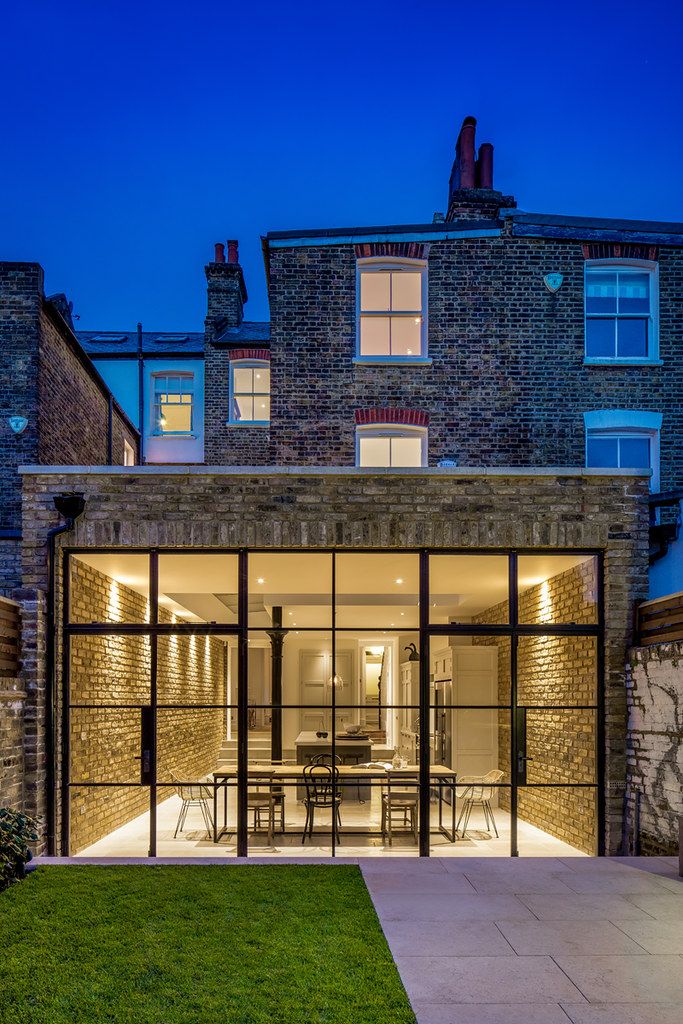 (Image credit: Darren Chung)
(Image credit: Darren Chung)Terraced House Extension: Will I Require Planning Permission?
There is actually a great deal you can do to a terraced house without applying for planning permission, and these works fall within your Permitted Development rights. You will not usually need to apply for planning permission for a terraced house extension if:
- It is not any nearer to the highway than the nearest part of the original house, unless there would still be 20m of clear space between the house and the highway
- It covers no more than 50% of the area of land around the original house, taking into account outbuildings
- It will be no more than 4m in height and within 2m of the property boundary and no more than 6m deep if single storey or 3m for two a two-storey extension
- The volume will not be increased by more than 10% or 50m³ (whichever is greater up to a maximum of 115m³)
- The house is not listed or in a Conservation Area
Getting More Natural Light into a Terraced House
By removing the wall separating the dining room and kitchen, and adding roof lanterns and glazed doors, light can now flow freely between the spaces (Image credit: Design Squared)Some of the most typical terrace layouts include a front room, originally a parlour; a middle room, (often now used as a dining room) and a back room, intended as a scullery or kitchen.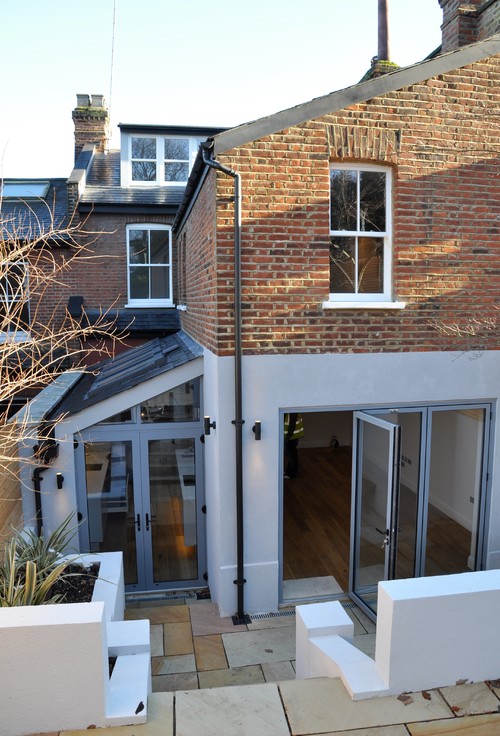 The nature of this layout often results in a middle room that suffers from a lack of natural light, either due to having just one small window or sometimes none at all.
The nature of this layout often results in a middle room that suffers from a lack of natural light, either due to having just one small window or sometimes none at all.
There are several ways in which to rectify this problem. The easiest – and often cheapest – solution is simply to open up this middle room into the front room, creating an open plan living/dining area and allowing the middle room to be flooded with light from the often large, sometimes bay, front window.
This clever side-return extension is almost entirely glazed, ensuring the kitchen dining space is full of natural light (Image credit: Design Squared)If you are reluctant for the two rooms to become one should consider installing a sliding glass partition or archway between the two to create a more flexible arrangement. In order to get even more light into this area, take a look at the possibility of replacing the current small window in the middle room with a set of French doors leading out into the garden — adding a fanlight will draw even more light in.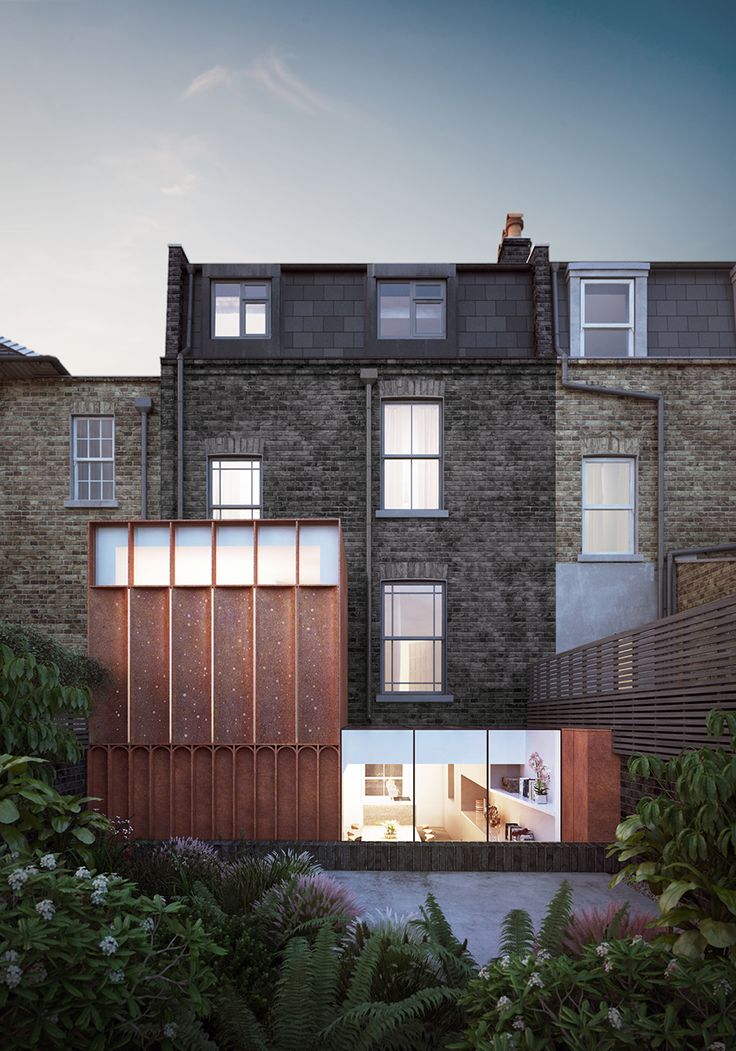
If you want to take things a step further, consider merging this middle room with the kitchen. Although this option often involves a little more structural work in the form of the removal and addition of walls, not only will it provide a lighter, more open dining room, but it will also result in a larger kitchen.
How to Add a Downstairs WC
Most buyers these days expect a house to have a downstairs WC and it shouldn't be too hard to make space for one in your terraced house. When deciding on the best location for your new WC, bear in mind that the minimum practical space around standard sanitaryware in a WC is 200mm on each side and 600mm in front.
The ideal locations for new WCs are either off the utility room or a main hallway, and although the Building Regulations no longer prevent you from having a WC directly off a living room, kitchen or dining room (there must still be a door), do consider how this will work in everyday life and think about privacy — will guests really want to use a WC leading off the dining room during a dinner party?
Understairs areas and storage cupboards provide lots of scope for a new WC, as do old attached coal stores or outside loos.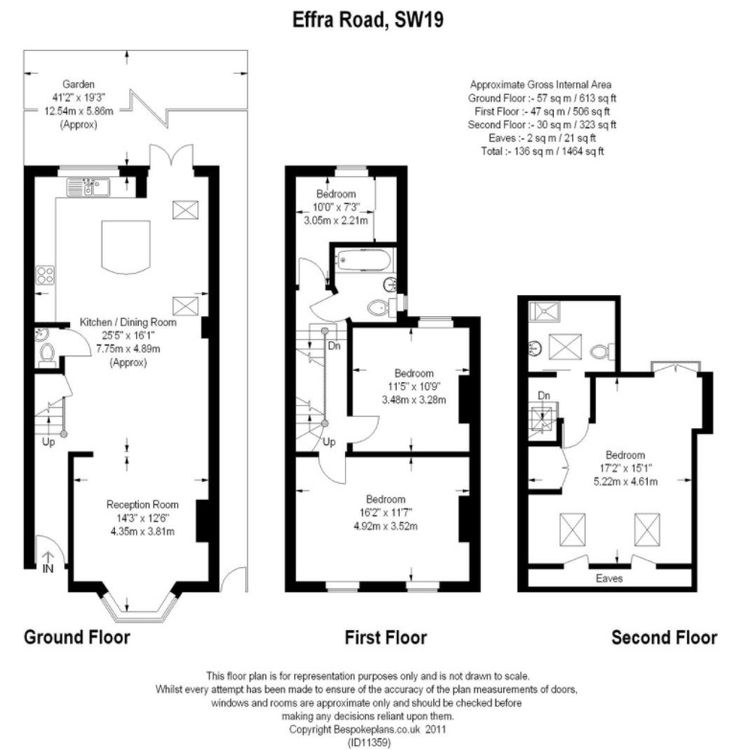
Can You Convert a Basement?
Many Georgian, Victorian and Edwardian terraced houses were built with cellars, but whether or not it will be worth your time and money to convert your basement depends on a number of factors. In high-value areas, such as London, the cost of the work compared to the resultant end value of the extra space gained often makes sense.
However, terraced streets have a ceiling value and you might find that you never make back the money you spend on converting the cellar in this instance.
Although planning consent is unlikely to be required, you may be up against some technical hurdles. Most cellars in terraced houses have low ceilings, so to become extra living space, the floors will need to be excavated.
This involves expensive underpinning of shallow foundations — something that will at least double the cost of converting a cellar with sufficient headroom, seeing costs rise from around £1,000-1,350/m² to around £2,000-4,000/m². These old cellars usually suffer from damp too, and so will need to be tanked, plus light and ventilation will also need to be considered.
(MORE: Basement Design Guide)
How to Move a Bathroom Upstairs
A large number of pre-twentieth century terraces were not built with bathrooms at all — a toilet in an outbuilding and a tin tub in front of the fire were sufficient.
As a result, bathrooms were often added to these homes during the 1950s and 1960s, usually tacked on to the end of a galley kitchen extension.
Borrowing space from two bedrooms on the first floor in order to create an upstairs bathroom is a popular project, certain to increase the value of a house (Image credit: Darren Chung)There are several ways to overcome this problem — you should weigh up the costs involved with how long you plan to stay in the house and how much it will add to its end value.
Moving the bathroom upstairs may well will mean losing a bedroom. For this reason, many owners of terraced homes convert the loft or create a two storey extension in which to house another bedroom.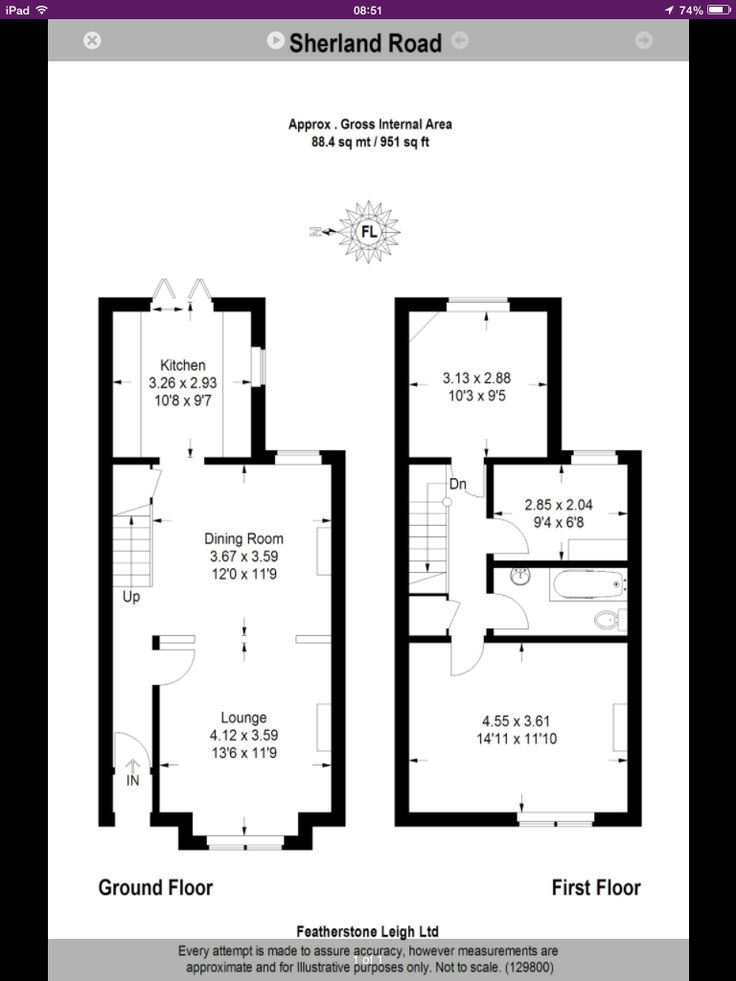
It is usually most convenient to use a bedroom at the back of the house for the new bathroom (or wherever is above the kitchen) as that is where the soil pipe is mostly likely to be located and connecting to existing plumbing should be easier.
It is sometimes possible to steal space from two adjoining bedrooms in order to create a small new bathroom. Bear in mind that at least 4.5m² makes for a comfortable bathroom space.
Adding More Bedrooms to a Terraced House
Adding an extra bedroom is a fantastic way to add value to a house. Avoid the temptation to simply retain or create a new ground floor bathroom in favour of having three bedrooms on the first floor — this is bound to put off potential buyers.
Unless you are planning a loft conversion, the most obvious way of gaining a new bedroom is to add a two-storey extension to the rear of the house.
Adding a two-storey extension to your terraced house is actually a very cost-effective method of gaining extra space, working out 20% cheaper to build per m² than single-storey extensions, as the cost of the groundworks and roof is effectively halved, being spread between two floors.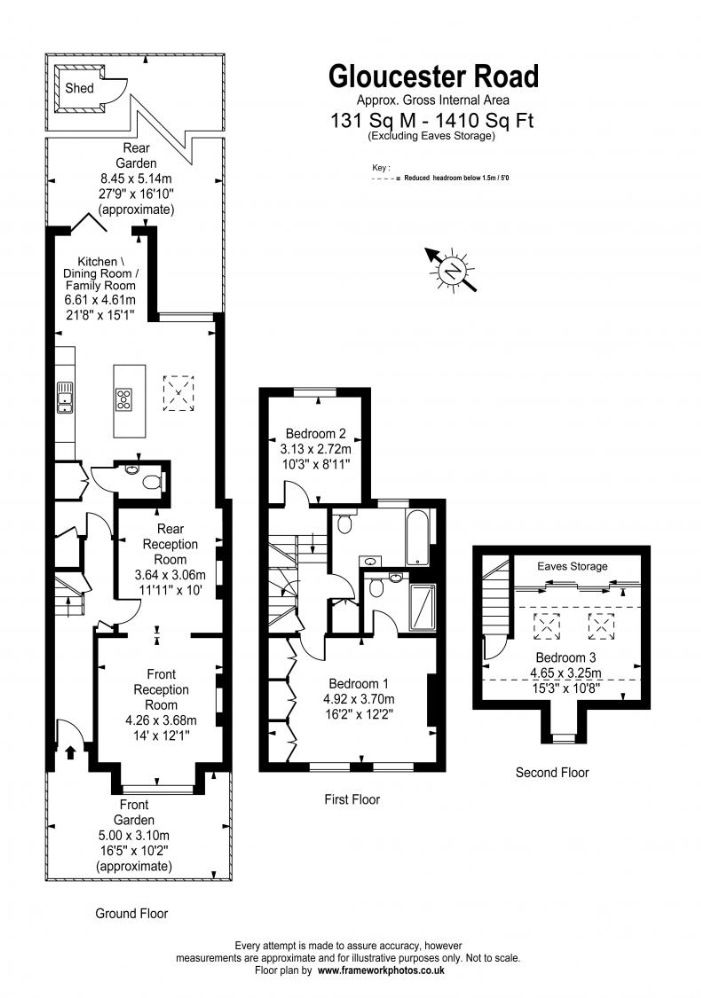 Building a two-storey extension also means that you get more space, without having to eat into your garden area.
Building a two-storey extension also means that you get more space, without having to eat into your garden area.
(MORE: Two Storey Extension Design Ideas)
Depending on how many extra bedrooms you plan on adding, consider the final bedroom-to-bathroom ratio. As a general rule there should be one bathroom for every three bedrooms, so adding a fourth bedroom may also warrant the addition of an en suite.
Adding an extra bedroom is one of the best ways to add value to a terraced house. (Image credit: Dave Burton)Loft Conversions: Is This a Possibility for You?
Before you do anything else, check that a loft conversion is actually viable. The amount of space you will have all depends on the height and pitch of the roof. You can take a look at this feature on loft conversions for difficult roof constructions if you are worried your roof will not allow a standard ‘room in roof’ conversion.
You need at least 2.3m of clear headroom for an area to be considered ‘usable’, plus you will need to take into account enough space with clear headroom for staircase access too.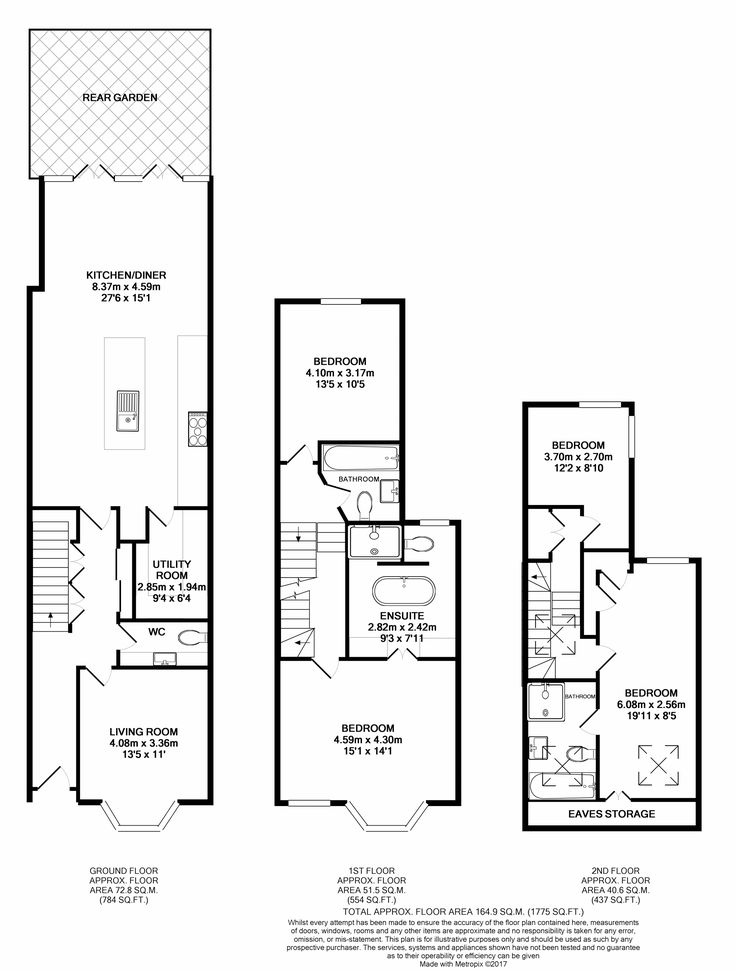 An architect or loft conversion specialist will give you an idea of how much space you will have and the options available. In addition, you need to think about where the stairs to this new room will go. Do you have space to reconfigure your existing staircase or to add a new one?
An architect or loft conversion specialist will give you an idea of how much space you will have and the options available. In addition, you need to think about where the stairs to this new room will go. Do you have space to reconfigure your existing staircase or to add a new one?
It is possible to adapt the roof structure to create more usable space, and any bulky water tanks can be discarded and replaced with a combination boiler in the kitchen to provide more space — but you need to weigh up how much value all this work will add, compared to what it is going to cost.
A simple conversion for storage will fall at the cheaper end of the spectrum. However, a complete conversion, including a new fixed staircase, will cost from £15,000 for a basic room-in-roof conversion, and above £20,000 for a dormer conversion (up to £45,000 if you’re adding a bedroom with en suite facilities). If your conversion will involve significant roof alterations the cost will rise further. Speak to local estate agents to determine how much value a loft conversion will actually add.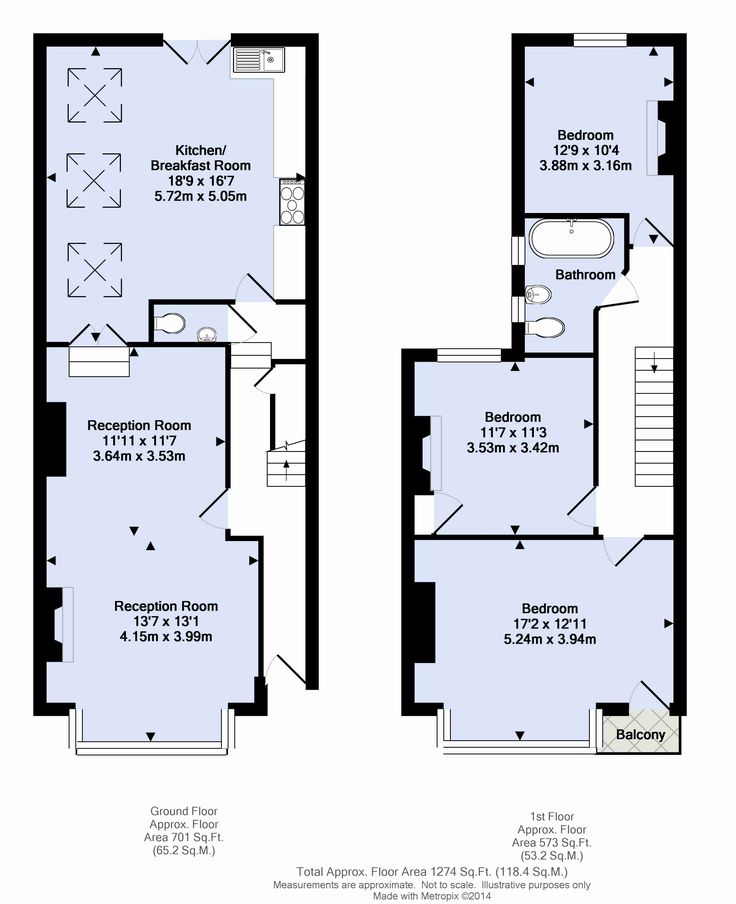
(MORE: Loft Conversion Ideas)
Many Victorian terraced are perfect for loft conversions and this is a great way to add extra bedrooms or, as in this case, a home office. (Image credit: Fraser Marr)What Does 'Right to Light' Mean?
When extending a terraced house, which, by its very nature, will be close to its neighbours, and particularly when considering a two storey extension, their ‘right to light’ will need to be taken into consideration. Although not specifically a planning issue, there is an ancient law dating all the way back to 1832 that still protects homeowners’ right to light.
What this means is that if you decide to build something that will substantially block light from a neighbour’s window, then the neighbour can take legal action against you for infringing on their right to light — providing their window has been there for at least 20 years. They could seek to have your proposed development reduced in size, or try to obtain a payment in lieu of reducing their right to light.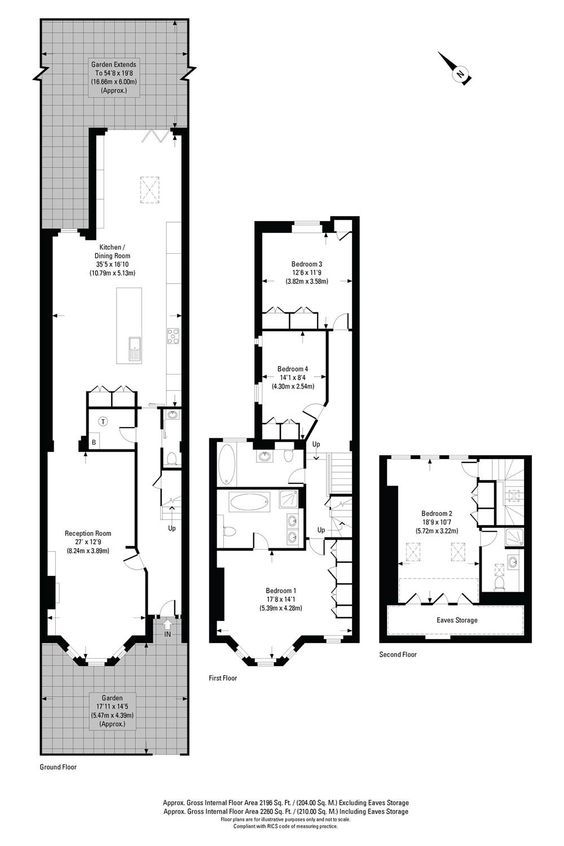
The right to light is not actually a material consideration in planning decisions and if the loss of light is fairly insignificant and can be compensated for financially, the court may award compensation rather than an injunction.
Natasha is Homebuilding & Renovating’s Associate Editor and has been a member of the team for over two decades. An experienced journalist and renovation expert, she has written for a number of homes titles. She has renovated a terrace and is at the end of the DIY renovation and extension of her Edwardian cottage. She is now looking for her next project.
100 photos of ideas for building and decorating with your own hands
Many people dream of having their own dacha, but those who already have it try to improve it, make it comfortable, convenient and practical. It is not so often that the construction and arrangement of a dacha economy starts from scratch, so to speak - in an open field. As a rule, we acquire a plot with buildings already built and equipped to some extent.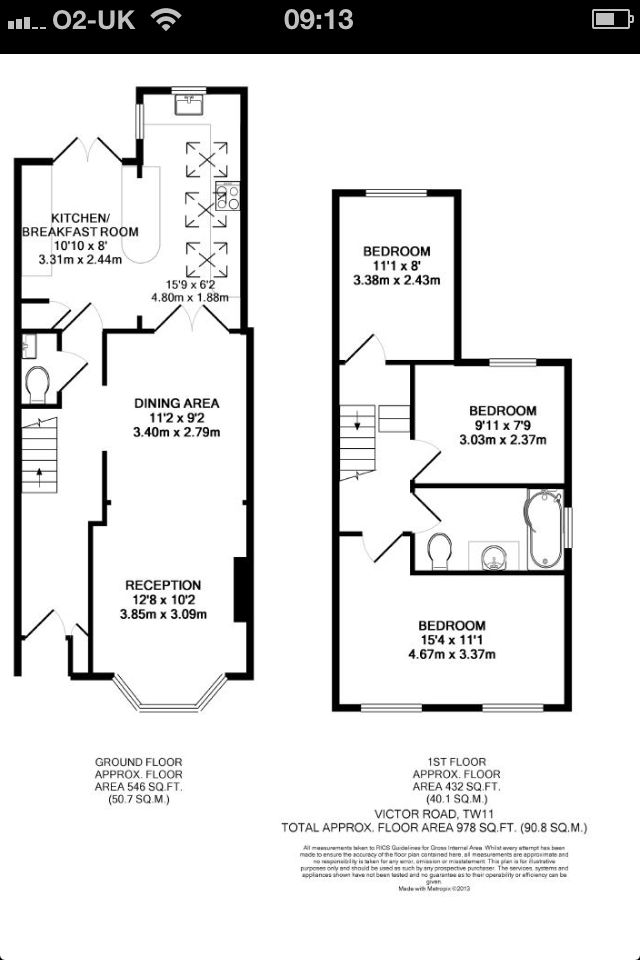
However, it would seem that the obvious advantage - there is no need to waste time and money, has its "minuses", namely, the new owner has to redo everything based on his needs and his ideas of comfort and practicality. For example, the usual situation is when the area of \u200b\u200bthe cottage is insufficient.
Of course, you can demolish everything and rebuild, but this is fraught with such difficulties and costs of effort, time, material resources that this option is not suitable in any way, in this case, there is only one thing left - to make an extension and increase the total area due to it .
Looking at the pages of sites ready-made options, or rather a photo of an extension to a house in a summer cottage, you can see: with the right approach to solving this problem, the result is quite acceptable, and given the lower costs in comparison with the option of new construction, it becomes the only correct one.
So, let's figure out how to make an extension with your own hands, what is needed for this, what "pitfalls" can await us along the way and reveal some non-obvious aspects.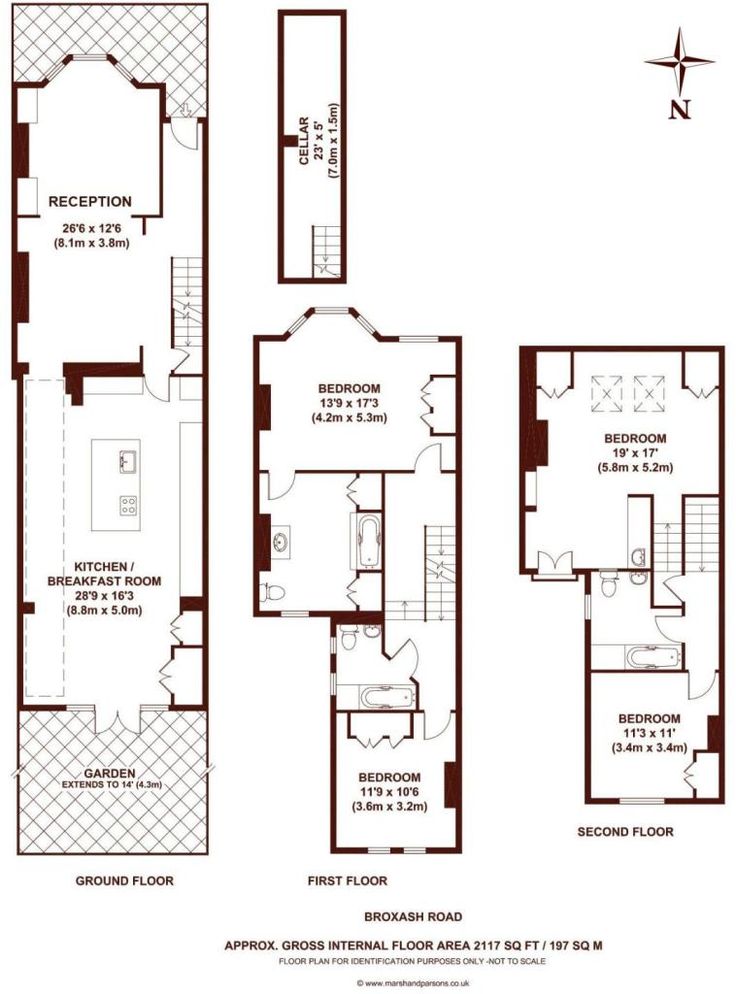
Brief content of the article:
Thinking and planning
As in any other business: before you start sawing, laying bricks and in general - creating a fuss of construction work, you will need to think carefully, plan everything. Otherwise, the result of the work, all the invested funds, the time spent may not meet your expectations, or nothing will come of it at all, but a sad experience, you see, is not what we expect and what we need.
At first glance, it may seem that what you have planned will require special skills or knowledge from you, however, there is nothing complicated and impossible, it all depends on your desire to work and study a little. As a rule, specialists are contacted when carrying out work on the supply of communications or during calculations during planning.
Let's decide what we need, what is required, and for this we need to know what species exist and what are their distinguishing features. So, as an additional room can be:
So, as an additional room can be:
Conventional canopy
This is the simplest option, it does not require a foundation: special support pillars act as a base for the main element - and this will be the roof of the extension. In this case, the walls are not erected at all, or some kind of screens act as them, for example, you can make a living curtain from specially planted climbing plants, which are guided along pre-strengthened threads.
In principle, the canopy still cannot be called an extension in the full sense of the word, it is rather an additional structural element of the main building.
Summer room
It can be a veranda or a terrace. The summer room does not require the use of insulation, the roof is made of lightweight material, and since the structure itself is lightweight, the foundation is made simple and cheap.
The disadvantage is also obvious - in this room you can relax or work only in the warm season, in winter the room is not used. The main "advantages" include the simplicity of design, low material costs, and the speed of construction.
The main "advantages" include the simplicity of design, low material costs, and the speed of construction.
Full-fledged housing for year-round use
In this case, we are dealing with a full-fledged capital construction. The convenience and comfort of the room will depend on how carefully everything will be designed, on the right choice of materials, on the quality of installation and finishing work.
It will require the construction of a full-fledged foundation, roof, main walls. Some infrastructure is needed: heating, electricity, ventilation, etc.
Kitchen
When choosing this type, remember that the kitchen will require you to sum up the entire list of communications, that is, during its construction, not only the room itself, but also the entire infrastructure is carefully designed.
In general, the kitchen will require additional financial investments from you, and for this reason it is rarely used as an additional room, with the exception of a simple, summer option.
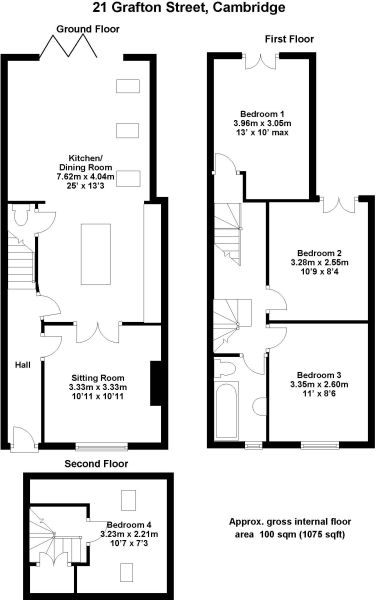
A popular view among summer residents - garage
The building itself will require you to build a full-fledged foundation, solid walls made of stone or reinforced concrete structures, and a roof. Inside, it is required to provide an inspection pit and think over a waterproofing system, otherwise the pit will be filled with water in the spring and during heavy rains.
Please note that the garage may be heated, in which case it will be necessary to prepare an appropriate plan and supply heating.
Sanitary room
Another type of outbuildings are bathrooms, showers or sanitary rooms. This option requires the entire complex of engineering communications: sewerage, water supply, etc., and if it is not an outdoor shower, a heating and ventilation system;
Sauna
This is one of the most difficult options, and due to the specifics and technical features, it is better to build a sauna separately.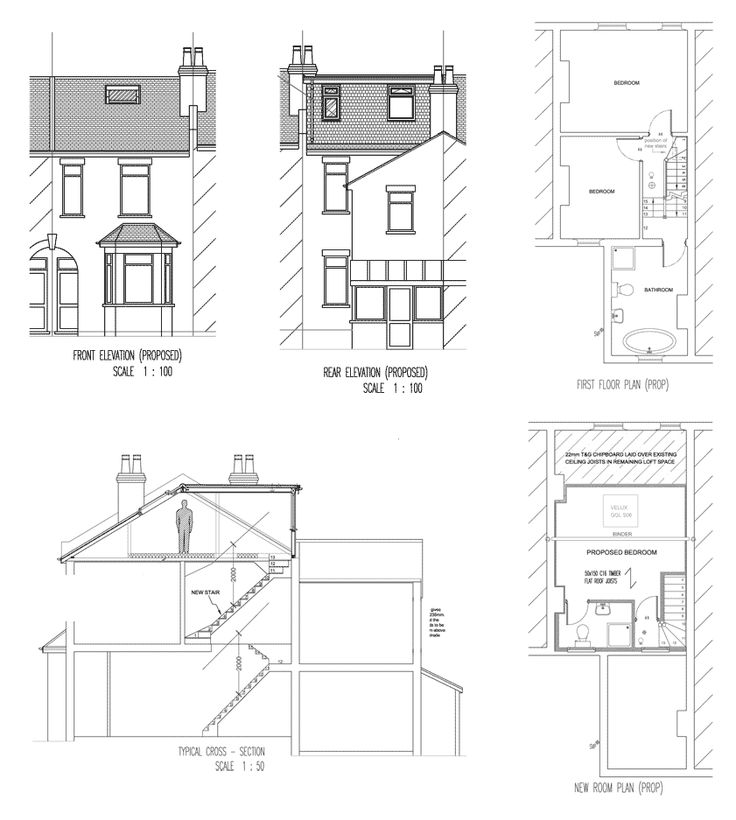
So, after the type is selected, we create the project itself, it is important to provide for all the moments and stages of work in it. Treat the design with due attention, the final result of all your work and costs largely depends on the quality and information content.
Construction technology
The most popular today are frame extensions, they are simple, require a minimum of material costs, and are quickly erected. There are the following frame technologies:
Frame-panel technology: panels with openings are made separately, and then, on the spot, they are assembled into a single structure. This method is great for extensions to a stone house; as a rule, it is not used for wooden buildings:
Frame-and-frame technology: suitable when an extension of a terrace or a small room is needed. As a rule, this method is used for summer rooms. The main advantage is the simplicity of design, as well as the fact that the master has a wide choice of methods, materials and options.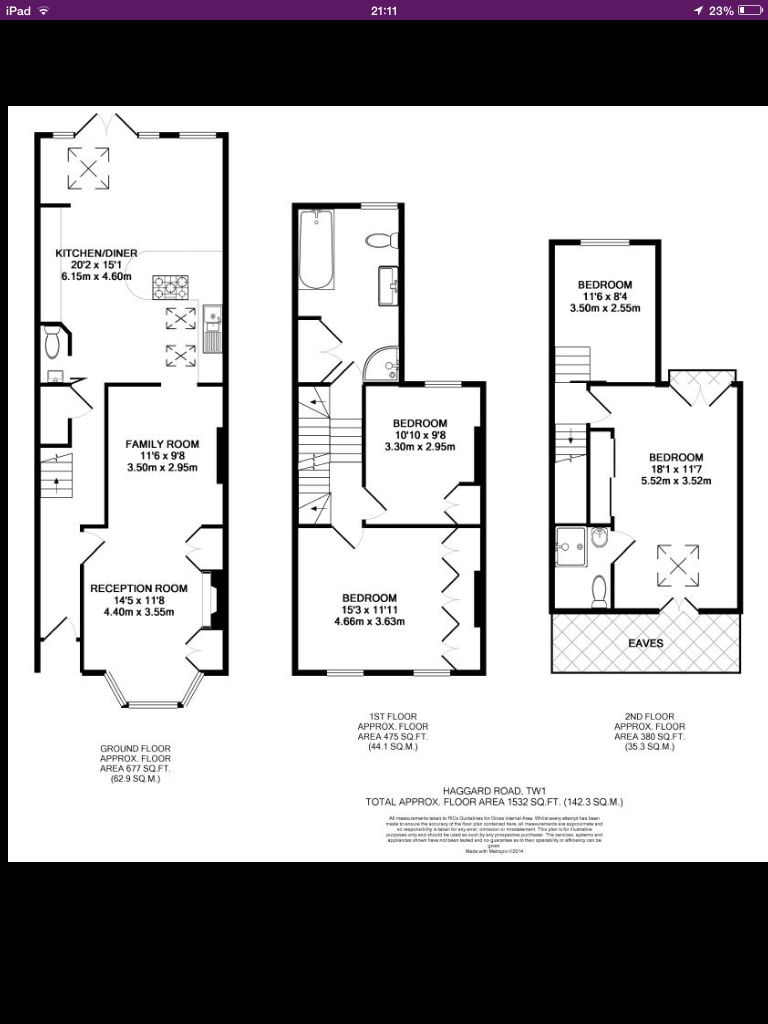
Frame technology is optimal when it is necessary to add verandas, summer rooms and other unheated and simple buildings. For a capital, all-weather premises or a garage, this method is rarely used, since in order to give the structure strength, it is necessary to significantly complicate it, and this is not always advisable.
For capital premises, stone or timber structures are more suitable. They have a margin of safety and other required qualities.
Regardless of which technology you use, the right extension to your home has one important design feature, namely, it will need to be attached to the main building. In view of the importance of this point, let us dwell on it in more detail.
Interfacing with the main building
Proper connection of an additional room will require careful calculations and research. It is necessary to take into account many factors and nuances, and therefore it is better to entrust planning to specialists.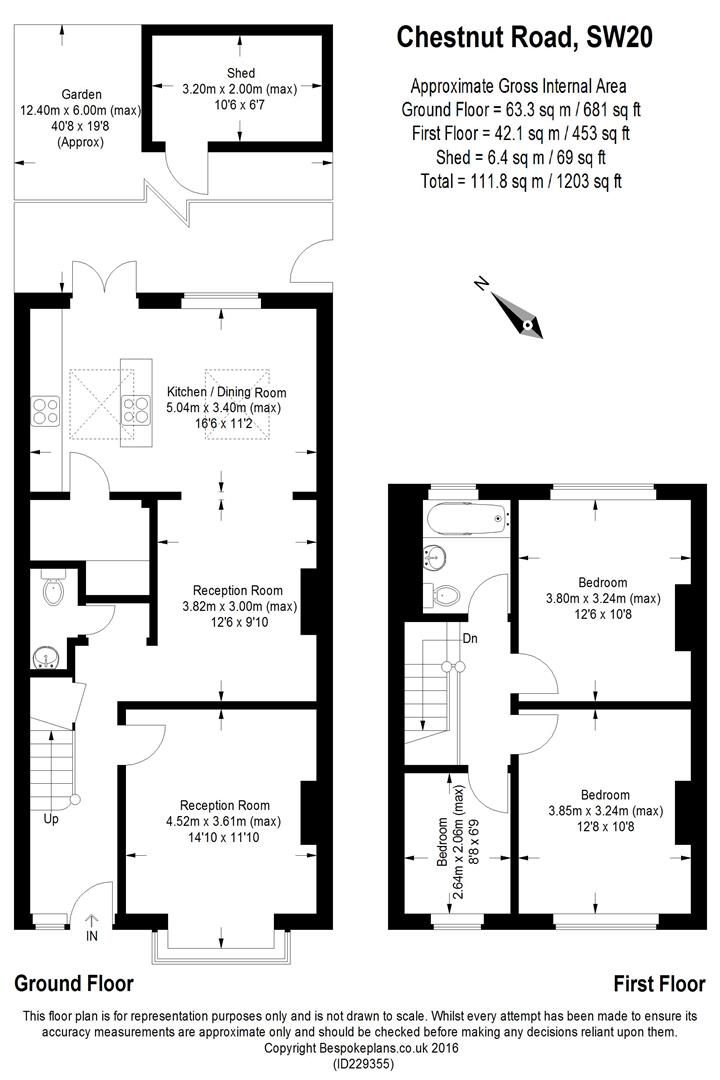
During independent design and installation, special attention is paid to the foundation, its interface with the main one. It is important to correctly attach the walls, roof, take into account the mutual influence and seasonal changes.
The most commonly used method in practice is the use of reinforcement technology, and iron bars act as reinforcement. Widely used various mounting structures.
It is important to properly install the roof, to think over and provide for the flow of water from the higher roof, if the design is incorrect, walls and ceilings may get wet.
Some legal issues
If you decide to build an extension on your summer cottage, it is important for you to remember that it is important to arrange any additional building structures in compliance with the relevant legislation. In addition, for the implementation of any construction work, first obtain a permit for their implementation.
To obtain permission and complete all required paperwork, you will be required to provide a properly executed project.
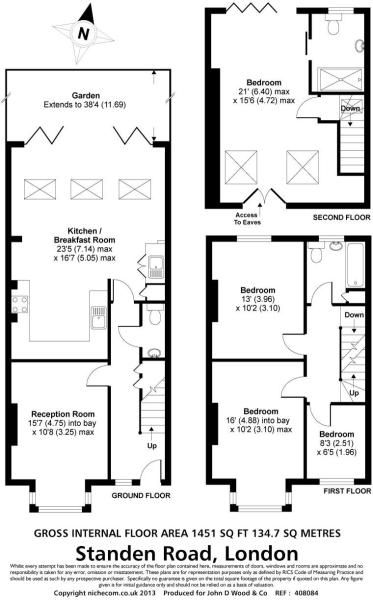
Getting to work
So, the project, which provides for a beautiful design of the extension, is ready, the necessary permits have been obtained, the necessary tools and all building materials are available, you can proceed directly to work.
In this case, the technology will not differ much in consistency or in some features. These are the usual works on erecting walls on a pre-prepared foundation, installing a roof, roofing, installing floors, summing up the necessary engineering communications, installing electrical wiring, finishing work outside and inside.
As you can see, the extension does not differ much from an ordinary building, in many ways it is, with the exception of erection in contact with the main building. That is why it makes little sense to describe the installation work, and if necessary, you will find the information you are interested in on your own .
Photo of extension to the house